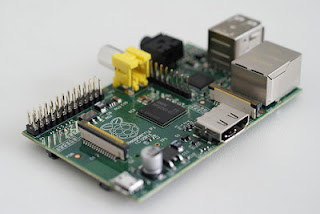 |
| Image courtesy of Gijsbert Peijs on Flickr. |
Online courses/tutorials:
- Hackety Hack – Teaches Ruby, ideal for teens.
- LearnStreet - Courses in JavaScript, Ruby, Python, HTML, and CSS where students can practice coding in their browsers.
- Lynda.com - A collection of video tutorials covering a wide variety of formal coding languages.
- Udemy - Covers a wide range of programming languages including: Java, Ruby, C++, PHP, HTML, CSS, and more.
- Crunchzilla Code Monster – 59 hands-on lessons to teach JavaScript.
- Codecademy – Courses in HTML, CSS, JavaScript, Python, Ruby, and PHP.
- Code School - Courses in JavaScript, HTML, CSS, Ruby, and iOS.
Child-friendly programming languages/tools:
- Scratch –Drag and drop, media-rich interface.
- Alice – Enables programmer to see real-time affects of actions.
- EToys – Media-rich visual programming environment.
- Waterbear – Drag and drop programming language.
- ToonTalk – Teaches programming through puzzles.
- Ruby – Allows beginners to create impressive games.
- RoboMind – Learn to programme a virtual robot.
Apps:
- Daisy the Dinosaur – Learn basic, drag and drop programming. Ages 4+.
- Robo Logic (iOS) – “You have to "program" a robot's movements by dragging commands to the memory of the bot”. Ages 4+.
- light-Bot (Android) – Similar premise as above. Ages 4+.
- Cargo-Bot (iPad) – Similar premise again. Ages 4+.
- Move the Turtle (iOS) – Teaches children the basics of programming. Ages 5+.
- Kodu (xBox, Windows) – Design a 3D game world. Ages 8+.
- KidsRuby – Learn Ruby programming. Ages 12+.
- Hakitzu – Teaches the fundamentals of JavaScript by programming robots to compete in arena fights.
Making Apps:
 |
| Image courtesy of Cea. on Flickr. |
- App Inventor – Learn to make Apps for Android devices.
- Codea – Programming for the iPad.
Making websites:
- Mozilla’s Thimble - Guides students to change variables to impact aesthetics and usability of sample websites.
- Code Avengers – Courses and exercises to teach JavaScript, HTML5 and CSS3.
Programming hardware:
- Arduino – Hands-on code that interacts with the real world.
- Lego Mindstorms – Create and programme physical robots through a visual programming language.
- Raspberry Pi – Designed specifically to help kids learn to program like their parents may have done on computers like the Spectrum ZX and Commodore 64.
- Brick Pi – Raspberry Pi programming Lego.
Mark Lassoff, founder of Learntoprogram.tv argues however, that when the individual has learnt the basics, it will be their portfolio which will stand them in good stead, “People think you have to go back to school to learn programming and other computer skills, but you don’t…There’s also the myth that you have to be some kind of math or science genius to learn it. Not true. You just need to learn the process, and then practice it. You can build a portfolio by doing volunteer work for a church or charity.”
Please follow @paulladley on Twitter, games-ED on Pinterest and like games-ED’sFacebook and Google+ pages for blog updates and interesting games based learning findings.
Pin It
Ohio went from being positioned just 33 in understudy credit defaults in 2008, to positioning 28 in 2009 and 18 in 2010. The national understudy credit default rate is 8.8 percent. One two year college in Ohio had a 22 percent default rate. These are disturbing numbers in reality. auto title loans near me chicago
ReplyDeleteWhile at hadoop course in Hyderabad I also concentrated on the technology which you have elaborately discussed here in this post.
ReplyDelete